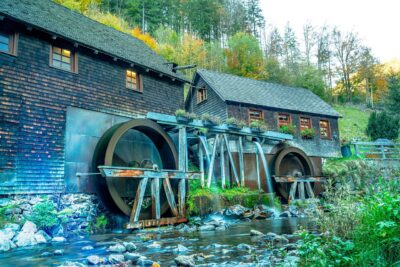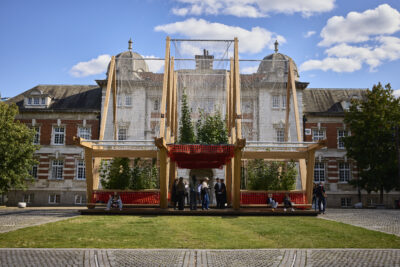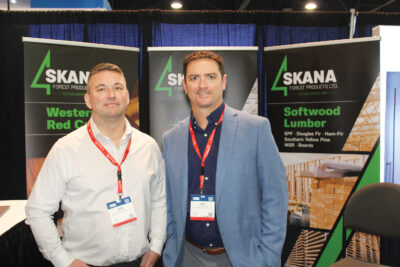America’s housing stock is failing to keep up with the needs of the present. According to the National Low Income Housing Coalition, the U.S. has a shortage of 7 million affordable and available rental homes for extremely low-income renters. New multi-family units are renting at prices cost-prohibitive for middle- and low-income renters. Nearly two-thirds of renters across the U.S. say they can’t afford to buy a home, and saving for a down payment is out of reach when home prices are rising at twice the rate of wage growth. These challenges, along with a two year-long pandemic, have only intensified America’s housing problems.
Over the last century, affordable housing projects have largely taken the form of hulking, cookie-cutter, concrete and steel structures that distance residents from both each other and the natural world. Many architects, contractors and builders have begun to challenge these affordable housing norms by pursuing new design elements that provide for a much healthier living space meant to invoke a sense of connection to nature. Known as biophilic design, the most in-demand modern housing today connects the occupants to nature even in the most urban of settings. In fact, there is an emerging body of science that is finding that natural building products like wood can have significant mental and physical health benefits for inhabitants.
Wood has been used as a building material for millennia, but the health benefits of wood use are only recently being studied and understood. Recent research from the not-for-profit FPInnovations has shown that people feel more relaxed when living around natural materials such as wood. Another recent study published in International Journal of Architectural Research found that building with wood products promote stress reduction and reduced depressive episodes.
The effects of our living spaces don’t stop with our mental health: they also expand to our physical health. Researchers at John Hopkins University and many other institutions have concluded for decades that environmental stresses take a serious toll on heart health. A comprehensive study out of the University of British Columbia indicates that the biophilic benefits of being near wood products lower blood pressure and heart rate, while also increasing activation of the parasympathetic nervous system to achieve greater learning outcomes.
Imagine if we could provide housing solutions that offer not simply a roof over one’s head, but also the dignity of a healthful space. Housing as a social determinant of health and well-being is brought to light in a plethora of research. Access to affordable housing is a cornerstone to improving quality of life, remediating inequality, addressing social problems and reducing unemployment. Key federal initiatives addressing affordable housing – such as tax credits to build or rehabilitate affordable housing, American Rescue Plan funds for investments in housing, and HUD’s Community Development Block Grant (CDBG) program – primarily address barriers in supply only. What is not being addressed are approaches that combine access with quality.
It is time we start to look differently at how we build affordable housing in this country. It is possible now, thanks to the advent of tall mass timber and other wood building techniques, to address our housing shortage in an entirely new way that incorporates biophilic design as a means of improving overall quality of life for those who need it most. Innovations in wood construction are making affordable housing options more plentiful and cost-efficient. Wood products offer significant advantages in terms of material and construction costs—while meeting all code requirements for safety and performance. Most American communities have a large pool of skilled contractors with wood-framing experience, which keeps labor costs competitive, reducing the overhead for affordable construction projects. Wood also has incredible sustainability benefits, from renewability to water quality to reducing our climate footprint.
We clearly need more low- and middle-income housing in this country, but moving forward let’s do it right with design principles rooted in dignity, improving human mental and physical health and sustainability. Combined with other elements such as natural lighting, running water fixtures, and natural air flows, the use of wood as both a structural and aesthetic fixture can be a crucial part of any biophilic design process that science is telling us can achieve important human mental and physical health benefits. For our most vulnerable populations, we as a society have the opportunity to provide housing in a new way, where the actual building itself is a more holistic part of the solution. That’s exciting to think about.









